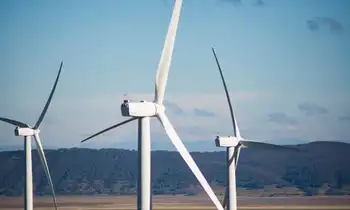Wind energy: mainstream renewable power
By London Telegraph
Protective Relay Training - Basic
Our customized live online or in‑person group training can be delivered to your staff at your location.

- Live Online
- 12 hours Instructor-led
- Group Training Available
In addition, the technology for wind energy is better developed and more commercially viable than other renewable energy sources.
However, what gets Eddie O’Connor – co-founder and chief executive of Mainstream Renewable Power – most excited is not simply meeting the targets but the opportunity to generate many thousands of new industrial jobs.
“Sixty-thousand people are employed in the wind energy industry in Germany right now,” he says. “Britain has fantastic wind energy resources and there is the potential to create a lot of jobs at a time when lots of other industrial jobs are falling in number.”
Mr OÂ’Connor set Mainstream Renewable Power, a renewable energy group, in Dublin early last year after selling Airtricity, the Irish energy group he founded in 1987.
“We’re involved in wind projects worldwide and we’re going to be involved in solar in ocean current projects as well – but wind is the most commercial renewable right now,” he says.
“Over the past 15 years, it has been getting more and more mainstream and 45pc of generating capacity installed last year was for wind energy, putting it ahead of gas, coal and nuclear energy.”
Mainstream is involved in projects to build onshore wind farms in Chile, Canada and South Africa and expects to have 200MW of capacity built by 2010.
It is interested in offshore wind, too, and in February was awarded exclusive rights to develop Neart Na Gaoithe (it means “strength of the wind” in Gaelic), a £1.1 billion offshore wind farm with a potential capacity of 420MW in the outer Forth Estuary, some 30km north of Torness. Mainstream also has the Horizonte site in the North Sea, off Germany.
Wind energy projects have attracted controversy in the UK with some high-profile investors pulling out, citing inadequate Government support.
However, Mr. O’Connor says Mainstream has been able to find financing for its projects, despite the credit crunch. “Offshore wind is demonstrably more risky than onshore wind and each investing company will have its own ideas about their appetite for risk,” he adds.
“However, 50 per cent of all electricity in Europe has to come from renewable sources by 2050 as part of an 80 per cent reduction of 1990 levels of carbon dioxide emissions.
“Project that forward and take account of the fact that Europe generates 3,380 terrawatt hours of electricity and I would predict that you’re going to have to build up to 1.6 million MW of electricity generating capacity offshore. You will need to get some very big numbers if you want to guarantee energy self-sufficiency.
“Actually, in Britain, the most difficult bit has been getting planning permission. It’s different everywhere, though. In Texas there’s no problem with that but the problem is getting grid connections, as they just don’t have the capacity. And in Denmark, you have to build offshore wind because they already have 3,300MW of onshore wind capacity and stopped new onshore wind farms five years ago.”











